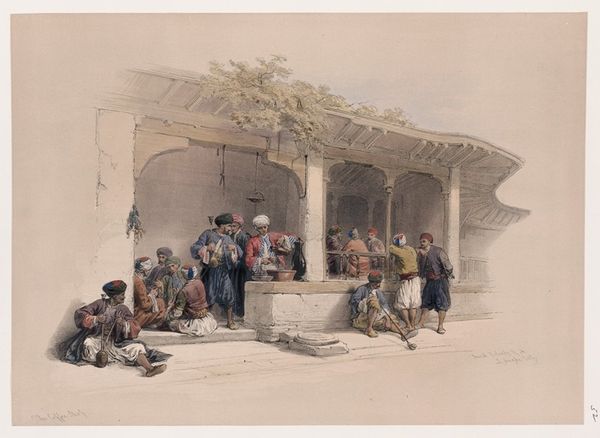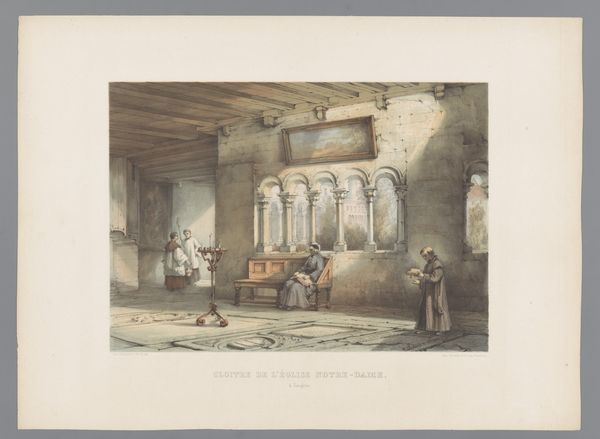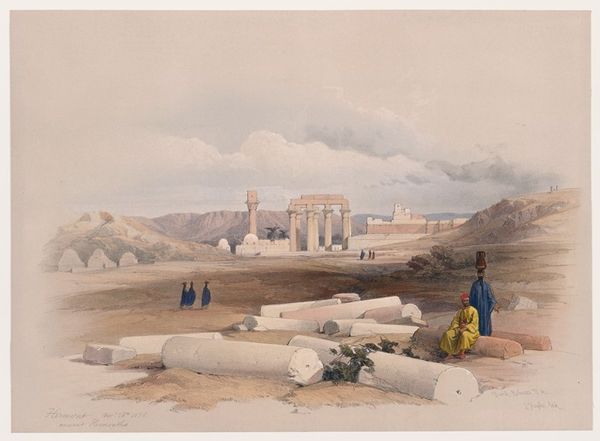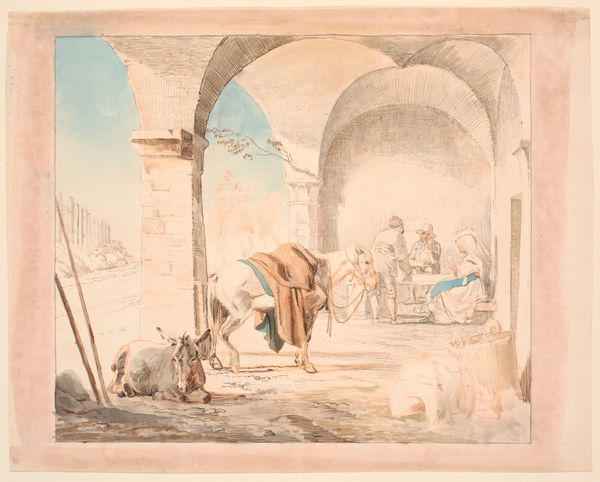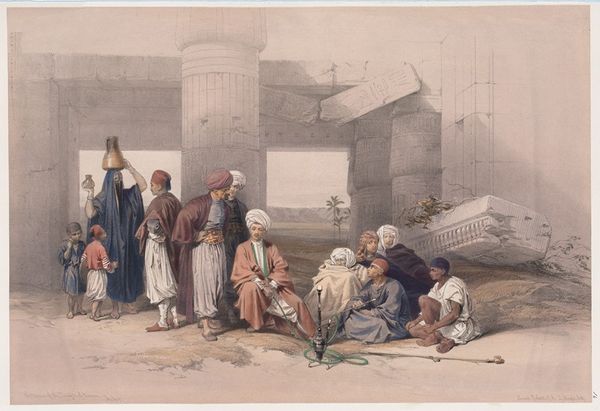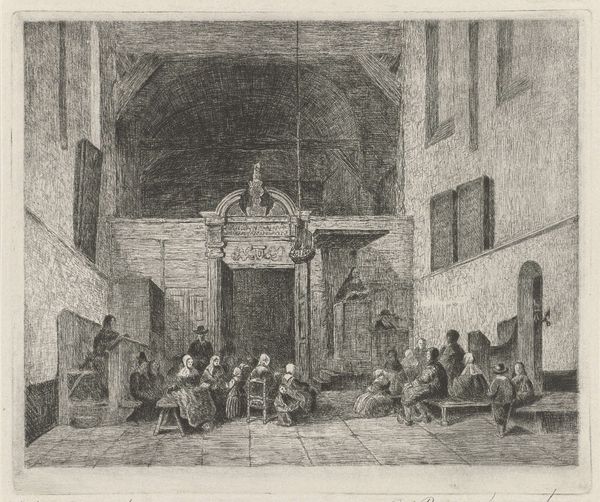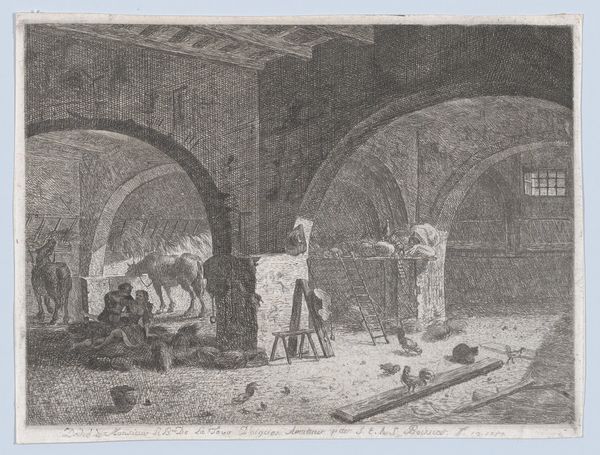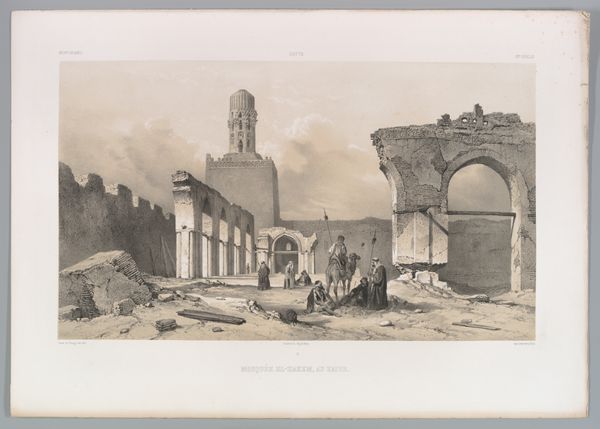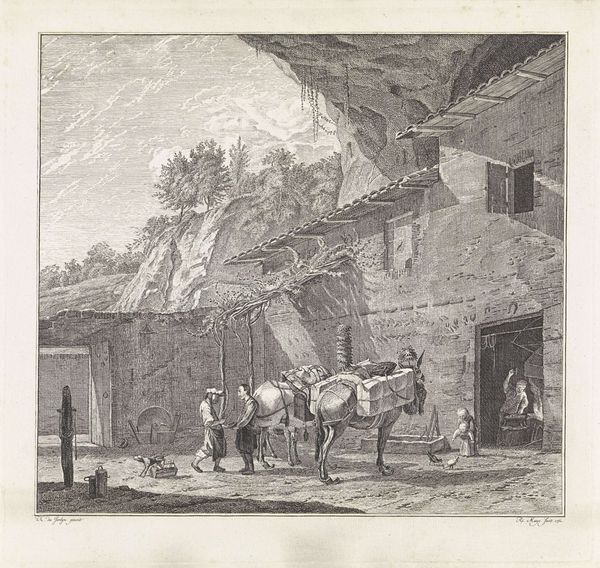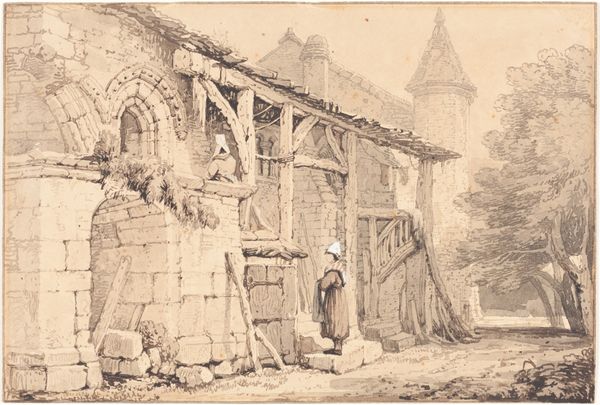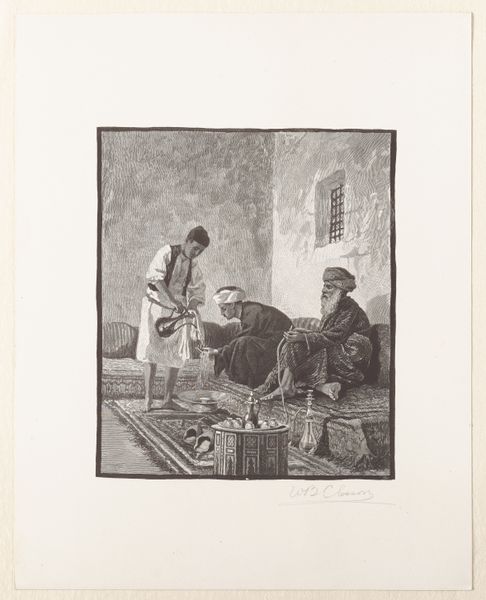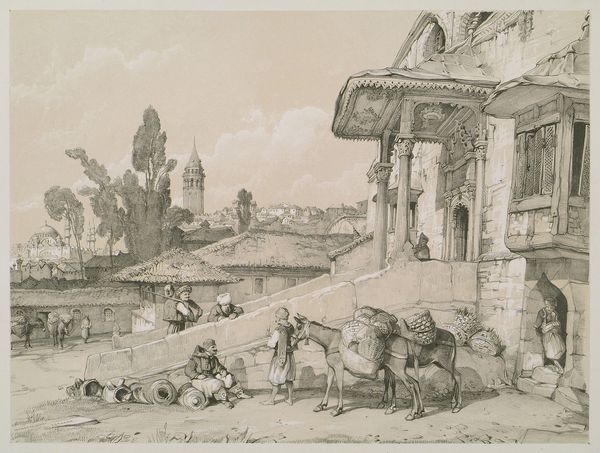![Dayr el Medeeneh [Dayr al-Madînah], Thebes. by David Roberts](/_next/image?url=https%3A%2F%2Fd2w8kbdekdi1gv.cloudfront.net%2FeyJidWNrZXQiOiAiYXJ0ZXJhLWltYWdlcy1idWNrZXQiLCAia2V5IjogImFydHdvcmtzLzY1MGI4YmNlLTFlN2ItNGUwZC05ZDMzLTYzY2UxNTM5MzljNS82NTBiOGJjZS0xZTdiLTRlMGQtOWQzMy02M2NlMTUzOTM5YzVfZnVsbC5qcGciLCAiZWRpdHMiOiB7InJlc2l6ZSI6IHsid2lkdGgiOiAxOTIwLCAiaGVpZ2h0IjogMTkyMCwgImZpdCI6ICJpbnNpZGUifX19&w=1920&q=75)
watercolor
#
water colours
#
landscape
#
ancient-egyptian-art
#
perspective
#
watercolor
#
ancient-mediterranean
#
watercolor
Copyright: Public Domain: Artvee
Editor: This watercolor by David Roberts, created between 1846 and 1849, depicts Dayr el Medeeneh in Thebes. I'm struck by the use of light and shadow to emphasize the architectural details of the ruins. What is your perspective on the visual composition of this work? Curator: Notice the way the artist has structured the composition. Roberts masterfully employs a receding perspective. The strong horizontal and vertical lines, evident in the pillars and building facades, establish a sense of depth and order, drawing the eye through the architectural space. What semiotic codes are operating, here? Editor: Semiotic codes? I see... the arrangement almost feels like a stage. Are the figures incorporated into the architectural construct itself? Curator: Precisely! The figures in the foreground are not merely observers but become integral to the structure. Their placement, gestures, and clothing, create lines that echo, and reinforce the geometrical balance of the temple. Editor: The colors also contribute, don’t they? The subtle hues of the stone are juxtaposed with the vibrant colors on the capitals of the pillars, guiding the viewer's eye upward. It brings a feeling of sacred wonder to the artwork. Curator: It's a play between decay and permanence, isn’t it? The cool tonality juxtaposed with strategic highlighting, evokes the sublime feeling you mention while affirming the weight and structural integrity of the monument, thereby preserving the subject beyond simple visual representation. Editor: That’s fascinating. I was primarily looking at the surface. Now, I recognize how Roberts used perspective, form, and tonality to construct an analytical framework of enduring visual weight. Curator: Indeed. By investigating the inherent qualities, Roberts creates an encounter exceeding documentation alone; a meditation on enduring order.
Comments
No comments
Be the first to comment and join the conversation on the ultimate creative platform.
